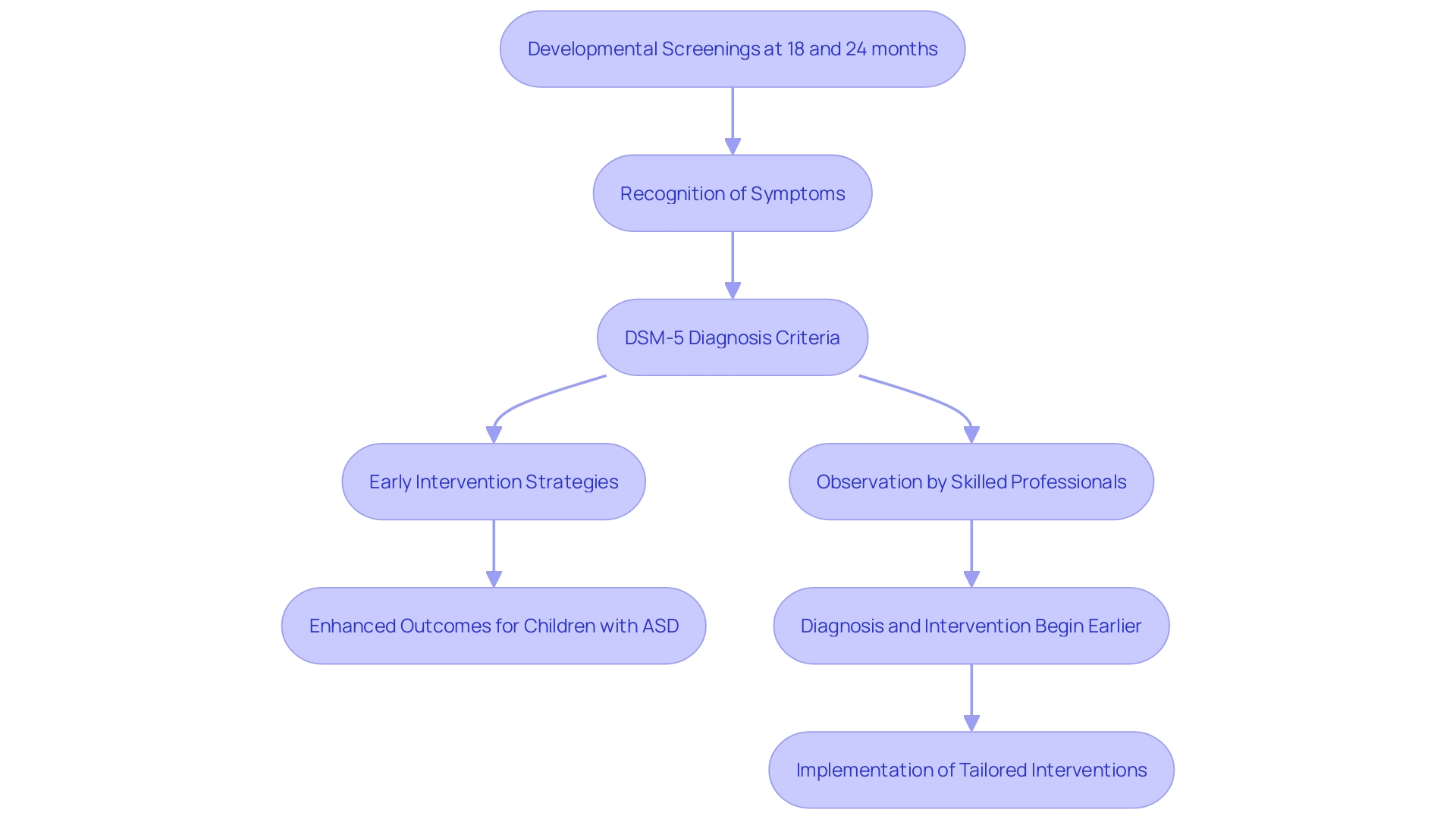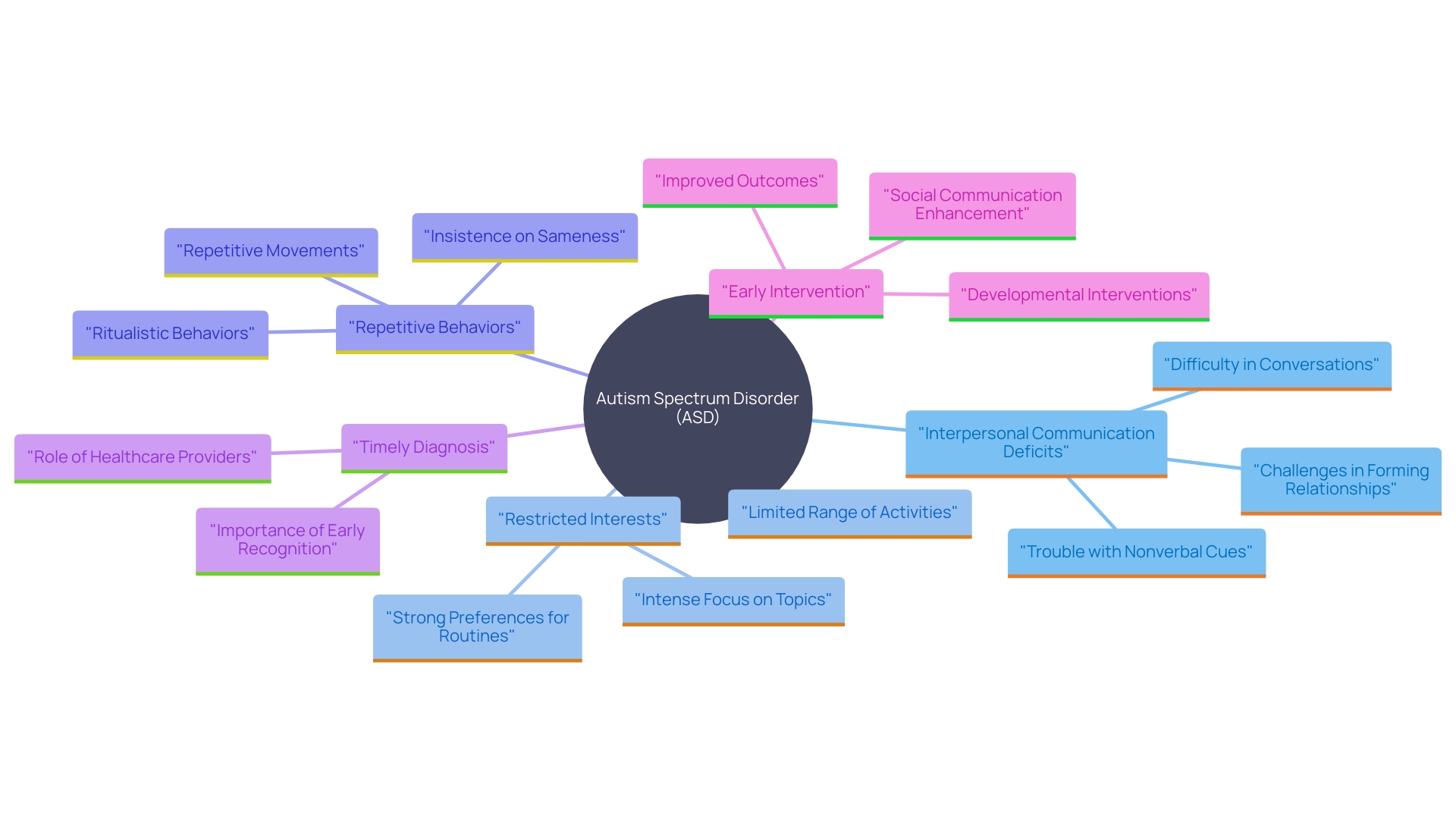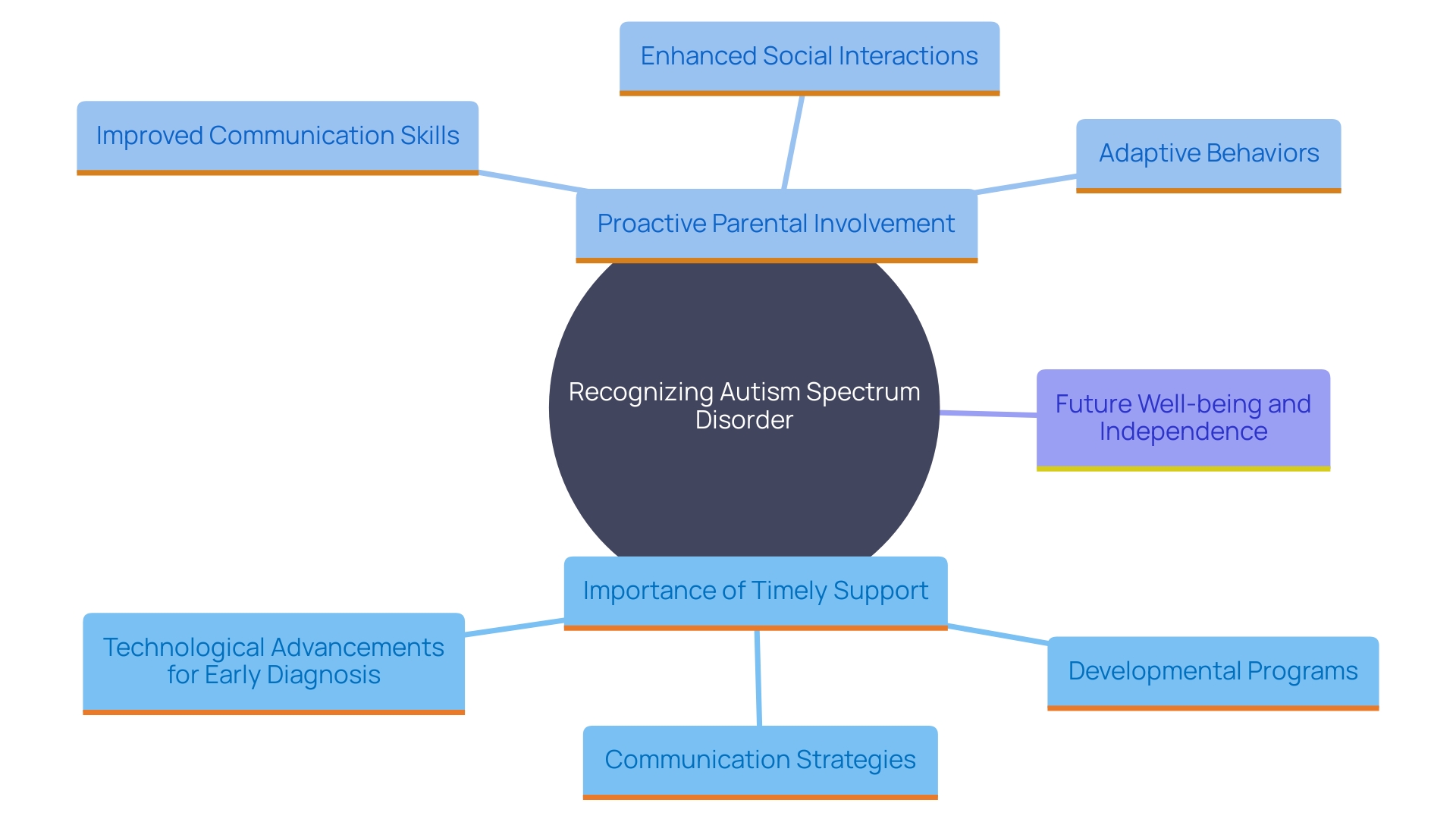Introduction
Autism Spectrum Disorder (ASD) is a complex developmental condition marked by significant challenges in social interaction, communication, and repetitive behaviors. Recognizing these symptoms early, often noticeable by age three, is essential for effective intervention and improving a child's quality of life. This article delves into the core domains of ASD symptoms, highlights the importance of early detection through developmental screenings, and underscores the transformative impact of timely, tailored interventions.
Real-world examples and recent advancements in diagnostic tools further illustrate how proactive approaches can empower children with autism to thrive.
Understanding ASD Symptoms
Autism Spectrum Disorder (ASD) encompasses a range of developmental conditions characterized by challenges in social interaction, communication, and repetitive behaviors. 'These symptoms often become apparent in the initial years of life, usually by age 3, though some youngsters may show signs sooner.'. Prompt recognition and action are essential, as they can greatly influence a young person's growth and quality of life.
The Diagnostic and Statistical Manual of Mental Disorders, Fifth Edition (DSM-5), is the primary tool clinicians use to diagnose autism. The DSM-5 criteria stipulate that the fundamental characteristics of autism must be evident in young years, although they might not completely emerge until interpersonal demands surpass the individual's ability to manage. Additionally, some challenges may be masked by learned coping strategies and support systems.
Regular developmental screenings, recommended at 18 and 24 months, play a vital role in early detection. During these screenings, healthcare providers assess a child's communication, interpersonal behavior, and other developmental milestones. The National Institute of Child Health and Human Development (NICHD) and the Centers for Disease Control and Prevention (CDC) have developed detailed checklists and guidelines to aid in identifying potential signs of autism.
Interventions, particularly those that are adapted to developmental needs, have demonstrated an enhancement in communication and other fundamental challenges related to autism. For instance, intensive behavioral strategies, which include operant conditioning and focus on practical skills, are widely endorsed in the United States for their effectiveness in fostering positive long-term results. Evidence supports that these measures, when implemented early, can lead to significant improvements in social communication, adaptive behavior, and other developmental areas.
Practical uses of these findings can be observed in various successful support programs. In Geneva, more than a hundred youngsters under the age of three have gained from a playful, intensive behavioral program that improves communication abilities, demonstrating promising results. Furthermore, a comprehensive meta-analysis indicates that while many interventions show promise, the quality and monitoring of these studies need improvement to ensure the best possible outcomes for children with autism.

Core Domains of ASD Symptoms
'Autism Spectrum Disorder (ASD) symptoms can be identified across three primary domains: interpersonal communication deficits, restricted interests, and repetitive behaviors.'. Children with ASD often face challenges in understanding interpersonal cues, forming relationships, and participating in imaginative play. These symptoms might not always be immediately apparent, as they can sometimes be masked by learned coping strategies or mistaken for other conditions, like hearing impairments or learning disabilities.
"Communication deficits are central to ASD and can manifest in difficulties with making eye contact, responding to interactions, or understanding the subtleties of conversation.". The Diagnostic and Statistical Manual of Mental Disorders (DSM-5) outlines these core features, which must be present from early childhood for a diagnosis. However, it's essential to acknowledge that these symptoms may only become more apparent as community demands rise and surpass a young person's ability to manage.
Restricted interests and repetitive behaviors are also hallmarks of ASD. These can include strict adherence to routines, intense focus on specific topics, or repetitive movements. For example, a young person might cultivate a strong fascination with geometric forms or textures rather than community interactions, as observed by researchers from the University of Geneva. They found that the focus of individuals with autism evolves in a distinct manner, emphasizing the significance of early support to improve interaction attention.
Timely diagnosis and action are essential. The National Institute of Child Health and Human Development (NICHD) recommends developmental screenings at 18 and 24 months to identify potential signs of autism. Timely support can greatly enhance results, providing youngsters with abilities that improve their quality of life and social adjustment. As Olena Iniutina from the Taras Shevchenko National University of Kyiv emphasizes, timely intervention can make a profound difference, especially in challenging environments where access to psychological support is limited.

Early Indicators of ASD
Initial signs of Autism Spectrum Disorder (ASD) can be observed in youngsters before they turn two years old. Parents might observe a lack of eye contact, delayed speech development, or limited interest in peer interactions. These signs are crucial as they can point to potential developmental delays or autism, which necessitate further observation and assessment.
It is important to consult with a healthcare professional if there are concerns about a young person's developmental milestones. According to experts, developmental delays occur when an individual does not reach certain milestones, which might indicate autism or other underlying issues such as hearing or vision problems. Timely support is crucial, as it has been demonstrated to greatly enhance results for youngsters with ASD.
Recent advancements in diagnostic tools, such as eye-tracking technology and telehealth assessments, are promising. These tools can offer prompt and precise diagnoses, which are essential for timely intervention. For instance, a portable tablet that monitors children's eye movements while they watch social interactions can help clinicians determine social disabilities and other aspects of ASD in a timely manner.
Organizations such as The Autism Community in Action (TACA) highlight the significance of timely treatment. Research consistently shows that beginning approaches such as behavioral therapy at a young age leads to better outcomes. Therefore, identifying initial indicators and seeking expert guidance is crucial for ensuring that youngsters receive the assistance they require to flourish.
Importance of Early Identification and Intervention
Recognizing autism spectrum disorder (ASD) signs promptly is essential for facilitating timely support that can greatly improve a young person's development. Based on studies, developmental programs have been demonstrated to enhance interaction between children and caregivers, while also tackling fundamental issues linked to autism such as communication difficulties. For instance, one study demonstrated that a 13-year-old girl with ASD significantly reduced her inappropriate comments and interruptions through a combined approach of response interruption and redirection (RIRD) and self-monitoring.
Data suggest that initial childhood support can result in favorable lasting effects, with a significant influence on communication, adaptive behavior, and language abilities. For instance, naturalistic developmental behavioral strategies have been especially successful, resulting in enhancements in social communication and adaptive behaviors. Furthermore, recent advancements in technology, including AI-assisted retinal scans and eye-tracking diagnostic tools, are paving the way for more precise early diagnoses and customized solutions.
Parents should be proactive in seeking evaluations if they observe concerning symptoms in their offspring. Timely and suitable interventions can empower young individuals by enhancing their communication skills, social interactions, and overall ability to adapt to their environments. This proactive approach not only supports the child's immediate development but also lays a foundation for their future well-being and independence.

Conclusion
Recognizing the symptoms of Autism Spectrum Disorder (ASD) early is pivotal for ensuring that children receive the necessary interventions that can profoundly influence their development. The article highlights the core areas of ASD symptoms, including social communication deficits, restricted interests, and repetitive behaviors, which often become apparent by the age of three. Early identification through regular developmental screenings is essential, as it allows for timely intervention that can significantly enhance a child's quality of life.
The importance of tailored interventions cannot be overstated. Research has shown that when interventions are implemented early, they can lead to substantial improvements in social communication, adaptive behavior, and overall developmental outcomes. Real-world examples demonstrate the effectiveness of these interventions, reinforcing the idea that proactive measures can empower children with autism to thrive.
Advancements in diagnostic tools and technology further support early identification and intervention efforts. By staying vigilant and seeking professional evaluations when concerns arise, parents can play a crucial role in their child's development. This proactive stance not only benefits the child in the present but also sets the groundwork for a brighter, more independent future.
Empowering children with the right resources and support is essential for navigating the complexities of ASD and fostering their potential.




